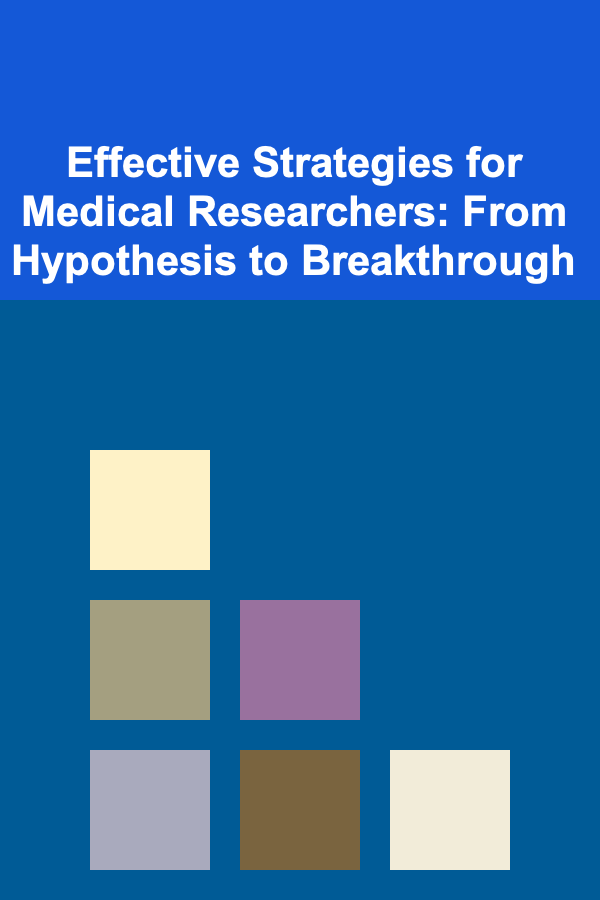
Exploring the World of the Vikings
ebook include PDF & Audio bundle (Micro Guide)
$12.99$8.99
Limited Time Offer! Order within the next:

The Viking Age, a period roughly spanning from the late 8th to the mid-11th century, holds an enduring fascination for modern audiences. Far from the one-dimensional image of bloodthirsty raiders often portrayed in popular culture, the Vikings were complex and multifaceted people: explorers, traders, settlers, craftspeople, and poets. Exploring the world of the Vikings requires a multifaceted approach, delving into archaeological discoveries, literary sagas, linguistic analysis, and even genetic research to paint a more nuanced and accurate picture of their lives, beliefs, and impact on history. This article will provide a comprehensive guide on how to embark on this fascinating journey of discovery.
Unearthing the Past: Archaeological Sites and Artifacts
Archaeology offers a tangible connection to the Viking Age. Excavations across Scandinavia, the British Isles, Russia, and North America have revealed settlements, burial sites, shipwrecks, and a wealth of artifacts that provide invaluable insights into Viking life.
Significant Archaeological Sites:
- Birka (Sweden): One of the most important Viking Age trading centers, Birka offers insights into Viking economy, trade routes, and social structures. Excavations have revealed evidence of workshops, dwellings, and a diverse range of goods from across Europe and Asia. The Birka grave fields, with their rich burial goods, offer clues to Viking beliefs about the afterlife.
- Hedeby (Germany): Located near the modern-day border between Germany and Denmark, Hedeby was another crucial trading hub. Its strategic location at the base of the Jutland peninsula made it a vital link between Scandinavia and continental Europe. Excavations have uncovered evidence of a fortified town with a bustling harbor, revealing the importance of trade and maritime activities in Viking society. The semi-circular defensive earthwork around Hedeby, known as the Danevirke, demonstrates the importance of defense and territorial control.
- Jorvik (York, England): Following the Viking conquest of Northumbria in the 9th century, York became the capital of a Viking kingdom. The Jorvik Viking Centre provides a unique immersive experience, recreating the sights, sounds, and smells of Viking-age York based on extensive archaeological excavations. The Coppergate dig, which unearthed well-preserved timber buildings, workshops, and artifacts, significantly expanded our understanding of Viking urban life.
- L'Anse aux Meadows (Newfoundland, Canada): This UNESCO World Heritage site represents the only confirmed Viking settlement in North America. The remains of turf houses provide definitive proof of Viking voyages across the Atlantic centuries before Columbus. While the settlement was relatively short-lived, its existence challenges conventional narratives about early European exploration and demonstrates the Vikings' exceptional seafaring abilities.
- Oseberg Ship Burial (Norway): Discovered in a burial mound, the Oseberg ship is one of the best-preserved Viking ships ever found. Along with the ship, the burial contained a wealth of grave goods, including elaborate wood carvings, textiles, and household items, providing unparalleled insights into Viking art, craftsmanship, and funerary practices. The skeletal remains of two women were also found in the burial chamber, although their identities and social status remain a subject of ongoing scholarly debate.
- Gokstad Ship (Norway): Another remarkably well-preserved Viking ship, the Gokstad ship provides crucial information about Viking shipbuilding techniques and maritime technology. Unlike the Oseberg ship, which was primarily a ceremonial vessel, the Gokstad ship was likely a seagoing vessel capable of long-distance voyages. A replica of the Gokstad ship successfully sailed across the Atlantic, demonstrating the seaworthiness of Viking vessels.
- Trelleborg Ring Fortresses (Denmark): These circular fortresses, dating from the late 10th century, are impressive examples of Viking military architecture. Their symmetrical layout and precise construction suggest a highly organized and centralized power structure. The purpose of these fortresses is still debated, but they likely served as military strongholds and centers of royal authority.
Analyzing Artifacts:
Archaeological artifacts provide tangible evidence of Viking material culture and daily life. By studying the craftsmanship, materials, and context of these objects, we can glean valuable insights into Viking society. Some key categories of artifacts include:
- Weapons and Armor: Swords, axes, spears, shields, and helmets reveal Viking combat techniques, military organization, and social hierarchies. The quality and ornamentation of weapons often reflected the status of their owners.
- Jewelry and Personal Adornments: Brooches, necklaces, bracelets, and rings made from precious metals, amber, and glass demonstrate Viking artistic skills and provide insights into personal identity and social status. The presence of foreign coins and jewelry in Viking graves indicates extensive trade networks.
- Tools and Utensils: Axes, knives, hammers, sickles, and other tools reveal Viking agricultural practices, carpentry skills, and metalworking techniques. Pottery, wooden vessels, and cooking implements provide information about Viking diet and food preparation.
- Religious Artifacts: Amulets, figurines, and runestones provide insights into Viking religious beliefs and practices. Thor's hammers (Mjölnir), depictions of Odin, and inscriptions referencing Norse mythology are common finds. The transition from Norse paganism to Christianity is reflected in the archaeological record, with evidence of both pagan and Christian symbols.
- Textiles: While often poorly preserved, surviving fragments of Viking textiles provide information about clothing, weaving techniques, and trade. The use of natural dyes and intricate patterns demonstrates Viking textile artistry. The discovery of silk and other imported fabrics in Viking graves indicates trade with distant lands.
Visiting museums with Viking Age collections is an excellent way to examine these artifacts firsthand. Museums like the Viking Ship Museum in Oslo, the National Museum of Denmark in Copenhagen, and the British Museum in London house extensive collections of Viking artifacts.
Sagas and Eddas: Exploring Viking Literature and Mythology
While archaeological evidence provides tangible insights into Viking life, the Norse sagas and Eddas offer a window into Viking beliefs, values, and worldview. These literary works, primarily written down in the 13th century but based on earlier oral traditions, provide rich narratives about Viking history, mythology, and social customs.
The Sagas: Tales of Heroes and Kings
The Icelandic sagas are prose narratives that tell the stories of Viking-age Icelanders, Norwegians, and other Scandinavians. They offer insights into Viking society, family life, feuds, and political conflicts. Some notable sagas include:
- The Saga of the Volsungs: A heroic saga that recounts the legendary history of the Volsung clan, featuring figures like Sigurd (Sigfried) and Brynhild (Brunhilde). It explores themes of heroism, betrayal, fate, and the corrupting power of gold. This saga is a primary source for the story that later inspired Wagner's Ring Cycle.
- Egil's Saga: A biography of the Viking poet and warrior Egil Skallagrímsson. It provides insights into Viking culture, warfare, and the role of poetry in Viking society. Egil's Saga is notable for its realistic portrayal of a complex and often contradictory character.
- Njal's Saga: Considered one of the greatest of the Icelandic sagas, Njal's Saga tells the story of a long-running feud between two families. It explores themes of law, justice, revenge, and the fragility of peace in Viking society.
- The Saga of the Greenlanders and Erik the Red's Saga: These sagas recount the Viking exploration and settlement of Greenland and North America. They provide valuable information about Viking seafaring techniques, navigation skills, and encounters with indigenous populations.
The Eddas: Mythological and Poetic Sources
The Eddas are collections of Old Norse poems and prose that deal primarily with Norse mythology. They provide valuable information about the Norse gods, their relationships, and the creation and destruction of the world. There are two main Eddas:
- The Poetic Edda (Elder Edda): A collection of anonymous poems that date back to the 10th-13th centuries. These poems include mythological lays, such as the Völuspá (the prophecy of the seeress), which describes the creation and destruction of the world; the Hávamál (the sayings of the High One), which contains ethical and practical advice; and heroic lays, such as the Lay of Sigrdrifa, which tells the story of the Valkyrie Sigrdrifa and her encounter with Sigurd.
- The Prose Edda (Younger Edda): Written by Snorri Sturluson in the 13th century, the Prose Edda is a handbook for poets that explains Norse mythology and poetic techniques. It includes stories about the Norse gods, such as Odin, Thor, and Loki, and provides a framework for understanding Norse mythology. Snorri's Edda is invaluable for reconstructing Norse mythology, although scholars recognize that it represents a Christian perspective on pre-Christian beliefs.
Interpreting the Sagas and Eddas:
It is crucial to approach the sagas and Eddas critically, recognizing that they are not straightforward historical accounts. They were written down centuries after the Viking Age and reflect the perspectives of their authors and the cultural context in which they were created. However, they provide valuable insights into Viking values, beliefs, and social norms. Some important considerations include:
- Oral Tradition: The sagas and Eddas were based on oral traditions passed down through generations. This means that the stories were subject to change and embellishment over time.
- Christian Influence: The sagas and Eddas were written down during the Christianization of Scandinavia. The authors were often influenced by Christian beliefs and values, which may have shaped their portrayal of Viking-age society.
- Literary Conventions: The sagas and Eddas follow certain literary conventions and narrative structures. Understanding these conventions is essential for interpreting the texts accurately.
Runes and Language: Deciphering Viking Communication
The Vikings used a writing system known as runes, which were primarily used for inscriptions on stones, weapons, and other objects. Studying runes and Old Norse language provides valuable insights into Viking communication, beliefs, and cultural identity.
The Runes: An Alphabet of Power
The Elder Futhark, the oldest known runic alphabet, was used in Scandinavia and other Germanic-speaking areas from the 2nd to the 8th centuries. During the Viking Age, a simplified version of the runic alphabet, known as the Younger Futhark, was developed. The Younger Futhark consisted of only 16 runes, which were used to represent a wider range of sounds than the Elder Futhark.
Runes were not just letters; they were also believed to possess magical properties. Runic inscriptions were often used in spells, charms, and other forms of magic. The Vikings believed that runes could influence events, protect against harm, and provide access to hidden knowledge.
Examples of Runic Inscriptions:
- Memorial Runestones: Many runestones were erected to commemorate the dead. These stones often include the name of the deceased, their relationship to the person who erected the stone, and a brief description of their life or deeds. The inscription on the Rök Runestone in Sweden is one of the longest and most complex runic inscriptions ever found, and its interpretation is still debated by scholars.
- Weapon Inscriptions: Some weapons, such as swords and axes, were inscribed with runes to enhance their power or to invoke the protection of the gods.
- Object Markings: Runes were also used to mark ownership of objects or to identify the maker of an item.
Old Norse: The Language of the Vikings
Old Norse was the language spoken by the Vikings. It was a North Germanic language closely related to modern Icelandic, Faroese, Norwegian, Danish, and Swedish. Studying Old Norse allows us to read the sagas and Eddas in their original language and to understand the nuances of Viking thought and expression.
Learning Old Norse can be challenging, but it is a rewarding experience that opens up a whole new world of understanding about the Vikings. There are many resources available for learning Old Norse, including textbooks, online courses, and language learning apps.
Beyond Scandinavia: Viking Expansion and Influence
The Vikings were not confined to Scandinavia. They were skilled seafarers who ventured far and wide, establishing settlements, trade routes, and political influence across Europe and beyond.
Viking Raids and Settlements:
- England: The Vikings raided the English coast from the late 8th century onwards. In the 9th century, they established the Danelaw, a region of England under Viking control. The Viking influence on English language and culture is still evident today.
- Ireland: The Vikings established settlements in Ireland, including Dublin, which became an important Viking trading center. They raided monasteries and other settlements, but they also engaged in trade and intermarriage with the Irish population.
- France: The Vikings raided the coast of France and eventually settled in Normandy, a region in northern France. The Normans, descendants of the Vikings, played a significant role in European history, including the conquest of England in 1066.
- Russia: The Vikings, known as Varangians, traveled down the rivers of Russia and established trade routes to the Byzantine Empire. They played a significant role in the founding of the Kievan Rus', a powerful East Slavic state.
- Mediterranean: Viking raids extended as far south as the Mediterranean Sea. They raided coastal towns and even attacked cities in Spain and North Africa.
- North America: As mentioned earlier, the Vikings established a short-lived settlement in North America, at L'Anse aux Meadows in Newfoundland.
Viking Trade Networks:
The Vikings were skilled traders who established extensive trade networks across Europe and beyond. They traded goods such as furs, slaves, amber, weapons, and silver. Viking trade routes connected Scandinavia with the British Isles, continental Europe, Russia, and the Middle East.
Viking Influence on Language and Culture:
The Vikings left a lasting legacy on the languages and cultures of the regions they interacted with. Many English words, such as "sky," "window," "knife," and "egg," are of Old Norse origin. Viking art and design influenced artistic styles in the British Isles and other parts of Europe.
Challenging Stereotypes and Misconceptions
Popular culture often portrays the Vikings as bloodthirsty barbarians with horned helmets. However, this image is largely inaccurate and based on historical misconceptions. It's important to challenge these stereotypes and to understand the Vikings as complex and multifaceted people.
The Myth of the Horned Helmet:
There is no historical evidence that Vikings wore horned helmets in battle. The image of the horned helmet is a 19th-century invention that was popularized by romantic artists and composers. Viking helmets were typically made of leather or metal and were often reinforced with iron bands. Some helmets may have had simple face guards or eye protection.
Beyond the Raider Image:
While the Vikings were known for their raids, they were also farmers, traders, craftspeople, and explorers. They established settlements, built ships, and created art. It is important to recognize the full range of Viking activities and achievements, not just their reputation as warriors.
The Importance of Nuance:
The Viking Age was a complex and dynamic period of history. It is important to avoid generalizations and to recognize that there were regional and temporal variations in Viking culture and society. Different groups of Vikings had different customs and practices. Over time, Viking culture evolved and changed.
Resources for Further Exploration
Exploring the world of the Vikings is a lifelong journey. There are many resources available for those who want to learn more, including:
- Books:
- "The Vikings" by Else Roesdahl
- "Viking Age Iceland" by Jesse Byock
- "The Viking World" edited by Stefan Brink and Neil Price
- "Gods and Myths of Northern Europe" by H.R. Ellis Davidson
- Museums:
- Viking Ship Museum, Oslo, Norway
- National Museum of Denmark, Copenhagen, Denmark
- British Museum, London, UK
- Jorvik Viking Centre, York, England
- Swedish History Museum, Stockholm, Sweden
- Websites:
- The Viking Answer Lady: A comprehensive website with information about all aspects of Viking life.
- Hurstwic: A website dedicated to Viking Age reenactment and living history.
- Archaeology.org: Features articles and news about archaeological discoveries related to the Vikings.
- Academic Journals:
- "Saga-Book" (The Viking Society for Northern Research)
- "Viking and Medieval Scandinavia"
- "Journal of the North Atlantic"
Conclusion
Exploring the world of the Vikings is a rewarding and intellectually stimulating endeavor. By combining archaeological evidence, literary sources, linguistic analysis, and a critical approach, we can gain a deeper understanding of these fascinating people and their impact on history. From the shores of Scandinavia to the far reaches of North America and the bustling trade routes of the East, the Vikings left an indelible mark on the world. By challenging stereotypes, embracing nuance, and continuing to explore new discoveries, we can continue to unravel the mysteries of the Viking Age for generations to come.

Effective Strategies for Medical Researchers: From Hypothesis to Breakthrough
Read More
How to Create a Checklist for Organizing Your First Book Club Meeting
Read More
How to Host a Family Baking Challenge at Home
Read More
How to Manage Your Handmade Agency Business as a Side Hustle
Read More
How to Organize Your Linen Closet for Easy Access
Read More
How to Stage a Home for Different Architectural Styles
Read MoreOther Products

Effective Strategies for Medical Researchers: From Hypothesis to Breakthrough
Read More
How to Create a Checklist for Organizing Your First Book Club Meeting
Read More
How to Host a Family Baking Challenge at Home
Read More
How to Manage Your Handmade Agency Business as a Side Hustle
Read More
How to Organize Your Linen Closet for Easy Access
Read More